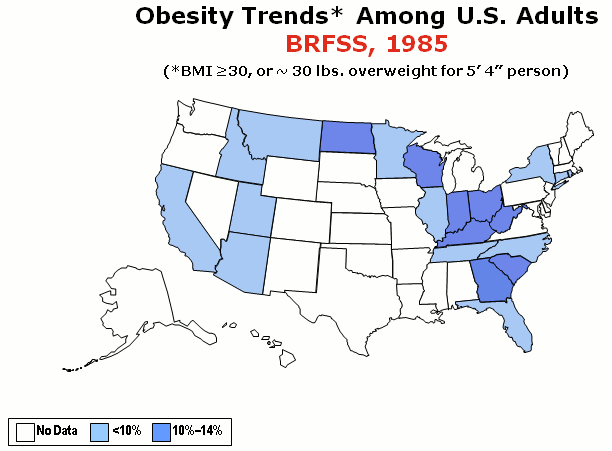The Growth of Our Girth
In 2010, more than one-third of American adults ages 20-74 were obese, and another third were overweight. Even though I was well aware of the growing “obesity epidemic,” watching the steady, seemingly inexorable, increase in obesity rates between 1985-2010 came as a nearly physical shock.
This map, built on data from the Center for Disease Control’s Behavioral Risk Factor Surveillance System (BRFSS), shows the prevalence rate of adult obesity by state for 1985 to 2010.

Prior to 1991, no state had an adult obesity rate greater than 15%. Seven years later, in 1998, the highest obesity rates were above 20%. Three years later, in 2001, obesity rates in Mississippi exceeded 25%, and rates in other states soon rose. By 2010, no state had an adult obesity rate less than 20%; adult obesity rates were equal to or greater than 25% in nearly three-quarters (36) of the states.
Data for 2011 shows that adult obesity rates remain high across the nation; though prevalence rates continue to rise, there is some evidence that the rate of increase has slowed in recent years.
Obesity is a major risk factor for many of the leading causes of preventable death, such as heart disease, stroke, and type 2 diabetes, and is associated with significantly higher medical costs. Given the size of the epidemic, even small changes in obesity prevalence would result in substantial medical savings, as well as improvements in longevity.


